When it is all about power consumption, we first need to know that the card with the factory settings with the 250 watts of the reference card has been set a very restrained Power Target, which could be manually raised to almost 300 watts, which is also possible for this cooling solution. Sufficient. This factory power target of 250 watts is of course fully exploited in gaming and stress testing. In the end, however, the increase in the afterburner to the maximum shows only a plentiful 287 watts instead of the possible almost 300 watts, since the card then already hard-hitting in your self-imposed temperature target at approx. 80°C.
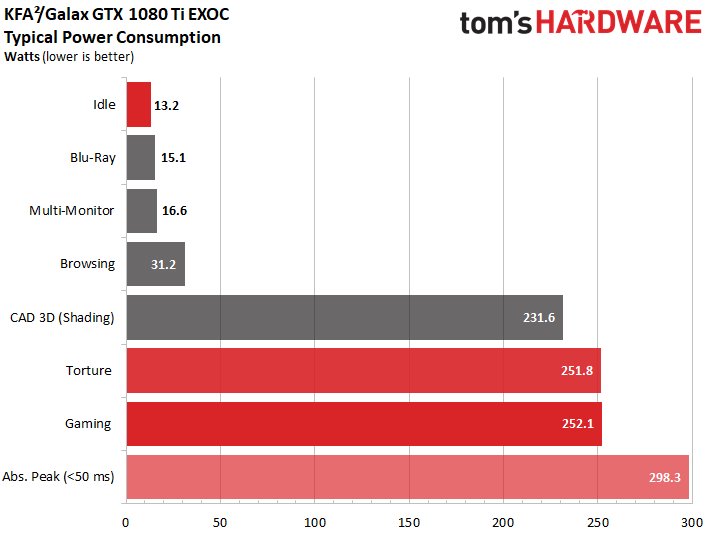
The chip on the test pattern is a more bender average, but still good enough to reach 1772 MHz at 0.975 V in the warmed-up state. With good luck and OC you can still reach 1847 MHz with 1.012 V – but unfortunately there is not much more with this card, which indicates bad luck in the GPU lottery. But that's life, because you can't always just be lucky with the pickled silicon.
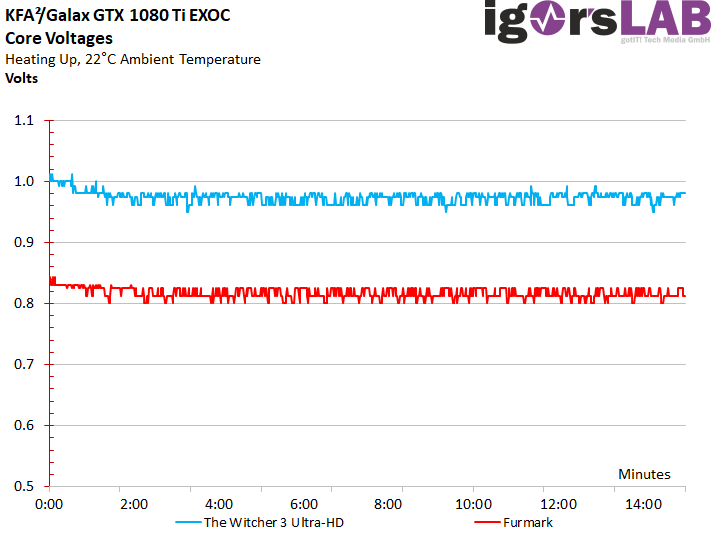
More about the gaming loop
Now let's look at the curve for the power consumption separately according to the individual supply rails (rails) in a higher resolution over the period of two minutes. Despite our intelligent low-pass filter, some spikes remain visible, which can then go up to almost 300 watts. On average, however, the map is quite exactly at the level of the set power target of 250 watts.
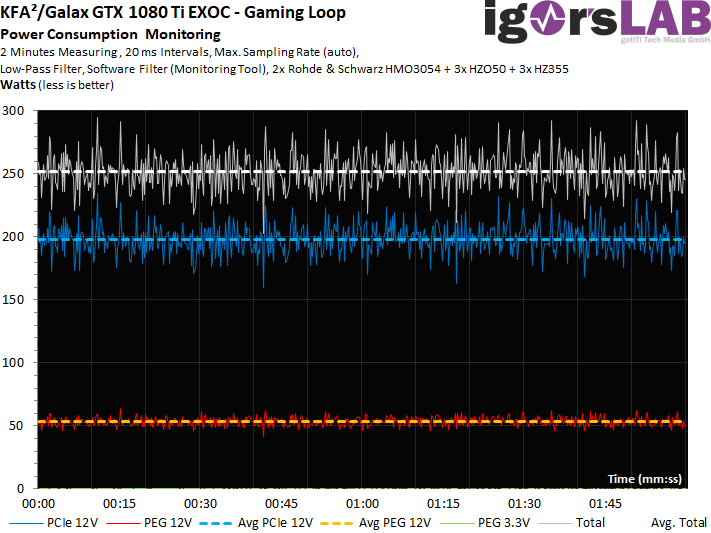
For this purpose, the curves of the currents look identically hectic:
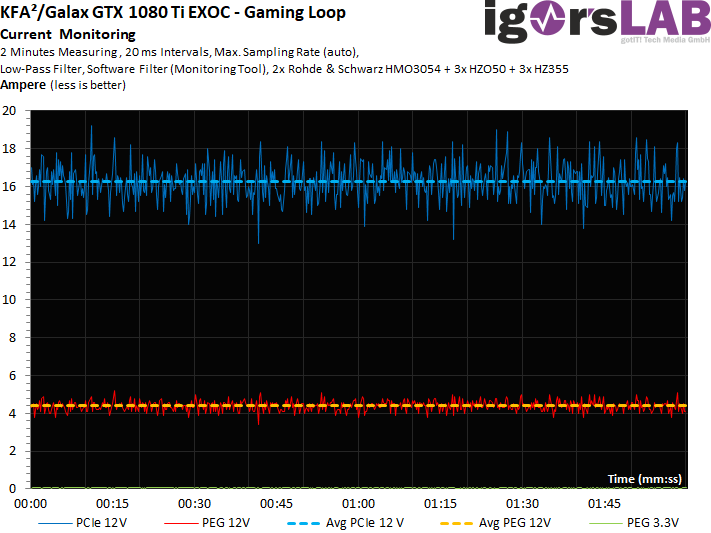
Torture test in detail
Since the load is more constant, the peaks are almost completely eliminated. We see very nicely where Boost is already starting to brutally throttle the power consumption and the card stays at the average even just below the value from the gaming loop.
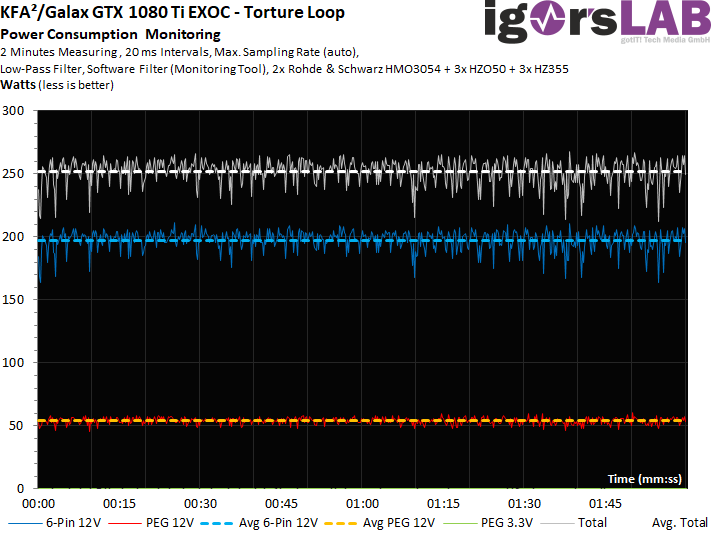
Again, analogously, only the view of the flowing currents:
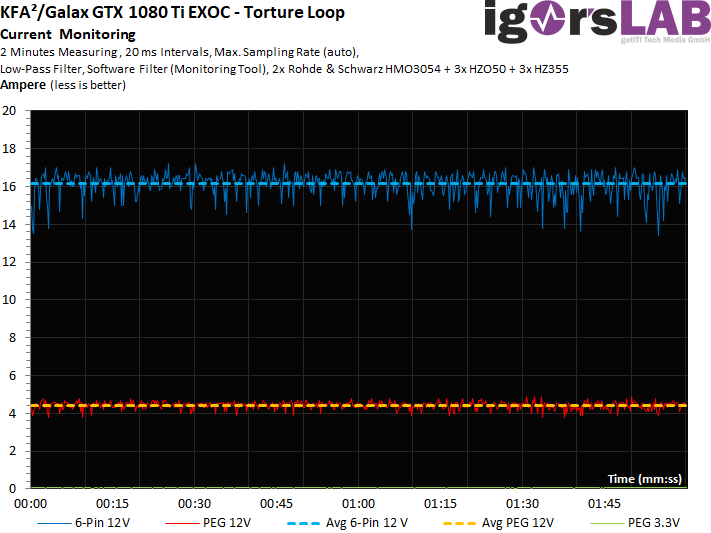
Utilization of the motherboard slot
This point has been repeatedly demanded by readers since the launch of the Radeon RX 480 (also for Nvidia cards), so we will now include this point in every test. With the card tested today, however, the concern is unfounded, because the slot is used with a maximum of 4.4 amps rather moderately, which is approx. 80% of the maximum possible current.
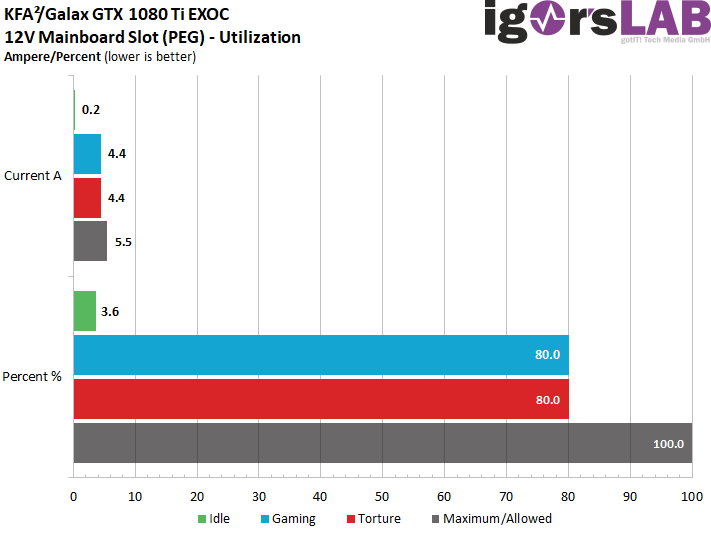

































Kommentieren